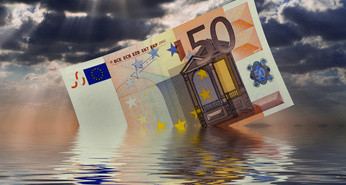Following Draghi’s 5 blows to the euro, we have seen a huge fall in EUR/USD that extended below uptrend support.
How low can it go? The team at Deutsche Bank brings up 4 important points:
Here is their view, courtesy of eFXnews:
“The implications could be very bearish for the euro and have important implications for other negative interest rate central banks,” argues Deutsche Bank.
1- Deposit rate packs much bigger punch than QE. “The transmission of deposit rate cuts is clearer and more immediate than QE. EUR/USD has a much closer relationship with short-end than long-end rates as investors typically fund FX positions at shorter horizons..So if the ECB embarks on deposit rate cuts, this should be much more effective in pushing the euro lower,” DB argues.
2- The ECB can probably cut quite a lot. “While the market has now fully priced a 10bp cut by December, there is no reason to think the ECB has to stop there. Our analysis suggests there is some way to go before the zero lower bound is reached: deposit withdrawals or cash hoarding isn’t evident in any of the three other European economies (Switzerland, Denmark and Sweden) where rates are more negative,” DB adds.
3- Implementation matters. “The ECB could also mitigate the impact of deposit rate cuts for banks by taking a leaf out of the SNB or Denmark Nationalbank’s book and introducing exemption thresholds for excess reserves,” DB argues.
4- Further cuts in Sweden, Switzerland and Denmark. “Finally, if further deposit rate cuts become reality, this implies further cuts to policy rates in Sweden, Switzerland and Denmark who remain very wary of exchange rate appreciation and/or the consequences for inflation. In that sense, it will probably be the smaller European economies, rather than the Eurozone, that reach absolute zero first,” DB argues.
For lots more FX trades from major banks, sign up to eFXplus
By signing up to eFXplus via the link above, you are directly supporting Forex Crunch.
